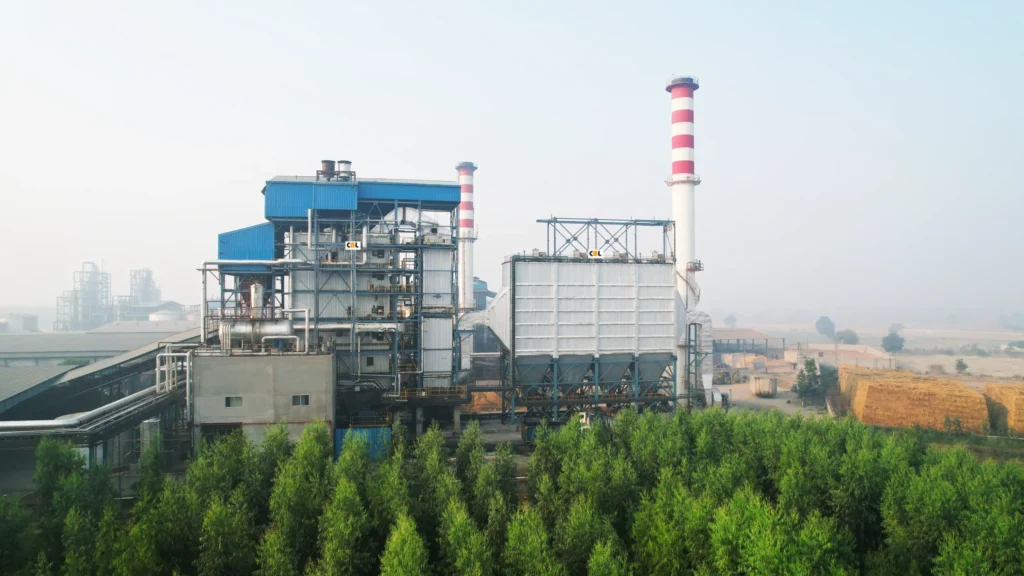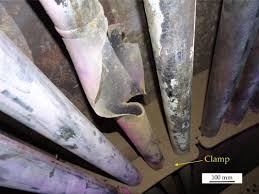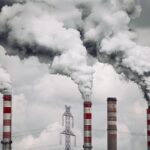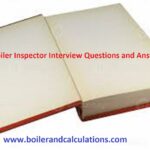Boilers are the heart of any steam and power generation system, and even minor issues can lead to costly downtime, efficiency losses, or safety risks. Understanding how to identify early warning signs, diagnose common problems, and apply effective solutions is crucial for smooth plant operations. This boiler troubleshooting guide is designed to provide practical insights into frequent boiler issues, their root causes, and proven corrective actions—helping operators, engineers, and maintenance teams ensure reliable performance and safe operation.

| SL No. | Problem | Root cause | Remedies/action to be taken |
| 1 | What are the reasons for Boiler trip? | a.High Drum level | 1-Maintain drum level. 2-Check and reduce feed water flow 3-Check feed water control valve operation. 4-Bring the Boiler into stable operation |
| b.Low drum level | 1.Maintain drum level 2.Check and increase feed water flow 3.Check feed water control valve operation. 4.Reduce load on Boiler. 5.Check for any leakages | ||
| c.Fans trip/stop | Check the root cause of fans trip or stop, reset and restart as sson as possible. | ||
| Fuel feeders trip or stop | 1.Check the root cause of fans trip or stop, reset and restart as sson as possible. 2.Check the Secondary air pressure and adjust as per requirement | ||
| d.High furnace draft | 1.Check the operation of ID fans, ensure suction and discharge dampers of fans are open. 2.Check the FD and SA fan control system, ensure speed reference are as per requiremet. 3.Ensure fuel spreading in furnace is uniform and there is no heap of fuel on bed or grate. | ||
| e.Low furnace draft | 1.Check the operation of ID fans, ensure speed reference of fans is as per requirement. 2.Ensure enough fuel is available on bed or grate 3.Ensure FD and SA fans speed reference is as per requirement. | ||
| 2 | What are the reasons for high drum level in Boiler? | a.Sudden load variation | Stabilize the load |
| How do you troubleshoot high drum level in Boiler? | b.Priming | 1.Check and fix the root acuse of priming.Priming is Water droplets carried with steam due to high drum level or poor separation → leads to false high-level readings. 2.Check the drum internals arrangement and rectify if required | |
| c.Foaming | Control the foaming.Caused by high dissolved solids (TDS), oil, or impurities in boiler water.So ensure good quality of feed water to the Boiler. | ||
| d.Failure of drum level controller | Check the controller and fix the issue. | ||
| e.Poor operation skills | Train the operators for proper opertion of the Boiler | ||
| f.Sudden pop up of drum safety or super heater safety valves | 1.Ensure proper operation of the Boiler. 2.Make use of start up vent valves to control the operating pressure | ||
| g.Swelling & SHrinking phenomenons in steam drum | Swelling: When steam demand suddenly increases, drum pressure drops, bubbles expand, and level rises temporarily. Shrinking: When steam demand decreases, pressure rises, bubbles collapse, and level falls. So, fine tuning of drum leel controller should be done. | ||
| h.Inadequate Blow down | Inadequate blowdown leads to contamination build-up and erratic level behavior. | ||
| 3 | What are the reasons for low drum level in Boiler? | a.Sudden load fluctuation | Stablilize the boiler load |
| b.Low feed water flow | Check the cause and increase the feed water flow. | ||
| How do you troubleshoot low drum level in Boiler? | c.Malfunction of drum level controller | Check and fix the malfunction issue.If required re-calibrate the control valve. | |
| d.Poor operation | Train the operators | ||
| e.Leakages or valves passing | Check nd attend the leakage and passing issues of valves, especially drain and blow down valves | ||
| e.Shrink effect | When steam demand suddenly increases, drum pressure drops, steam bubbles collapse in water, causing water level to shrink temporarily. | ||
| 4 | Boiler ID fan trip | a.Low furnace draft | Check the cause and optimise the ID and FD fan speed references. |
| b.Overload operation of the fan | Check and normalise the load on fan. | ||
| c.Mechanical failure like bearing failure, high vibrations, high bearing temperature | a.Check the cause of bearing failure and fix it. b.Carryout realignment c.Check for imbalance d.Check and apply lubricant in bearings | ||
| d.Electrical failure like high motor winding temperature, high bearing vibrations | a.Check the cause of high vibrations of bearing and fix it b.Apply lubricant c.Check sensors connections and ensure the correctness | ||
| e.Malfunction of vibration or temperature sensors | a.Check and get the connections tightened b.Replace the faulty sensors | ||
| 5 | Boiler FD fan trip | a.High furnace draft | a.Check the cause and optimise the ID and FD fan speed references. b.Ensure proper fuel spreading on grate c.Ensure ID fan’s inlet and outlet dampers are open fully |
| b.Overload operation of the fan | Check and normalise the load on fan. | ||
| c.Mechanical failure like bearing failure, high vibrations, high bearing temperature | a.Check the cause of bearing failure and fix it. b.Carryout realignment c.Check for imbalance d.Check and apply lubricant in bearings | ||
| d.Electrical failure like high motor winding temperature, high bearing vibrations | a.Check the cause of high vibrations of bearing and fix it b.Apply lubricant c.Check sensors connections and ensure the correctness | ||
| e.Malfunction of vibration or temperature sensors | a.Check and get the connections tightened b.Replace the faulty sensors | ||
| 6 | Fuel feeding trip/stop | a.SA or PA fan trip | Check the cause of fan trip, reset and restart |
| b.Feeders jam | Remove the jam and start the feeders. Check the cuase of jamming and ensure no jammings in future. | ||
| c.Overload operation | Normalise the load | ||
| d.Electrical issue | Check the cause and fix it. | ||
| e.Mechanical failure | Check the cause and fix it. | ||
| 7 | Safety valve frequent pop up | a.Load variation on Boiler | Stabilise the Boiler load and check the cause for frequent load variation. |
| b.Sudden cut off of load | Check the cause of load cut off. Ensure Process line safety valves are in operation Bring the start up vent control valve in Auto operation | ||
| c.Wrongly set safety valves | Check and reset the safety valves | ||
| d.Loosened spring of safety valve | Replace the spring and get done the servicing of safety valves | ||
| e.Poor operation skills | Train the operators for handling Boiler operation during emergency conditions. | ||
| 8 | What are the reasons for Low main steam pressure? | a.Low fuel feeding | a.Increase the fuel feeding b.Check for any chokings |
| b.Improperly adjusted furnace draft | Check and adjust the draft in furnace properly. | ||
| c.Overload operation of the Boiler | Bring the Boiler to normal operation. | ||
| d.Auto combustion logic is not working | Check and fix the issue. | ||
| e.Load fluctuation on Boiler. | Stabilise the Boiler load | ||
| f.Poor fuel quality | Check and ensure the desired quality of the fuel. | ||
| g.Variation of drum level | Control and normalise the drum level | ||
| h.Poor heat transfer due to scaling and soot deposition | a.Operate the soot blowers regularly b.Check and ensure the right quality of feed water | ||
| i-Low combustion air temperature | check and arrest lekages in APH | ||
| j-Poor operation skills | Train the operators for proper operation of the Boiler. | ||
| k-Issues in ID, FD, PA/SA fans | Check the cause and attend the issues. | ||
| 9 | What are the reasons for Low main steam temperature? | a.Low fuel feeding | a.Increase the fuel feeding b.Check for any chokings |
| b.Poor quality fuel | Check and ensure the desired quality of the fuel. | ||
| c.Improperly adjusted furnace draft | Set the furnace draft as per requirement | ||
| h.Poor heat transfer due to scaling and soot deposition | a.Operate the soot blowers regularly b.Check and ensure the right quality of feed water | ||
| e.Load fluctuation on Boiler. | Stabilise the Boiler load | ||
| f.Failure of attemperator valves | Check and attend the problems in attemperators. | ||
| g.Improperly tuned temperature controllers | Tune the temperature controllers properly | ||
| 10 | What are the reasons for High main steam temperature? | a.Overload operation of the Boiler | Bring the Boiler to normal operation. |
| b.More fuel feeding | Control the fuel feeding and maintain as per design values. | ||
| c.High moisture in the fuel | a.Select the good quality fuel. b.Optimise the moisture in fuel. | ||
| d.Low feed water temperature at the economiser inlet. | Increase the feed water temperature at economiser inlet. | ||
| e.Higher excess air. | Control the excess air. | ||
| f.Operation of the Boiler on more negative draft. | Balance the draft, maintain furnace temperature from – 2 to 4 mmwc. | ||
| g.Failure of attemperator Control valves | Inspect and tune the control valves properly | ||
| h.Improperly tuned steam controllers | Tune temperature controllers properly. | ||
| i.Sudden variation of Boiler load | Sudden rise of load leads to increase in main steam temperature.So, operate the Boiler smoothly | ||
| j.Poor Boiler operation | Train the Boiler operators for smmoth and efficient operation of the Boilers. | ||
| 11 | Boiler tube failure | a.Operation of the Boiler at higher pressure and temperature. | Never operate the Boiler more than designed parameters. |
| b.Tubes internal scaling | Maintain the feed water quality properly Inspect Boilers regularly | ||
| c.Overheating | Check the cause of over heating and set the flame/burners properly. | ||
| d.Erosion of the tubes | Maintain desired velocity of the flue gas at all the zones. | ||
| e.Fatigue failure | LImit frequent load variation and START/STOPS. | ||
| f.Internal stress and corrosion | Tubes fail due to corrosion, corrosion is mainly due to low pH, dissolved oxygen and other impurities in water which lead to pitting and weakening of the tubes. If Boilers are being operated in such conditions pressure parts go into failure. | ||
| g.Wrong operation | Select the skilled operation team for Boiler operation | ||
| h.Uneven thermal expansion | Check and ensure No any obstacles for free thermal expnsion of the Boiler | ||
| i.Poor welding joints | Ensure proper welding joints & inspect regularly on every annual or short shut downs. | ||
| 12 | Boiler feed pump trip or stop | Low deaerator level | Check for cause and normalise the deaerator level. |
| Mechanical issues like high bearing temperature, vibrations etc | Check and find the cause for failure. | ||
| Electrical issues like high bearing temperature, vibrations etc | Check and find the cause for failure. | ||
| Over load operation | Bring the Boiler to normal load. | ||
| Malfunction/Human error | a.Fix the malfunction. b.Train the operators for proper operation of the Boiler. | ||
| 13 | Boiler blow down valve failure | Passing of the valve | Replace or overhaul the valve |
| Improperly operation of the valve | Follow Standard operation procedure | ||
| 14 | High flue gas temperature? | a.Soot deposition on tubes. | a.Operate the soot blowres regularly b.Select low ash content fuel |
| b.Boiler over load operation | Bring the Boiler to normal operation | ||
| c.High moisture fuel | Optimise the moisture content in fuel | ||
| d.Economiser inlet temperature is more than design | Maintain the feed water temperature as per design | ||
| e.Lesser combustion air | Increase combustion air quantity | ||
| f.Air temperature is more than design at SCAPH outlet | MAintain SCAPH outlet air temperature as per design. | ||
| g.APH, FD bypass damper is open | Close the damper | ||
| Low flue gas temperature? | a.Low load operation of the Boiler | Maintain the Boiler load atlest 60 to 80% of MCR | |
| b.APH, FD air bypass damper is closed | Partially open the bypass damper | ||
| c.Low fuel quality | Slect the good auality fuel | ||
| d.More recident time of fuel in furnace | Maintain the residence time as per design | ||


